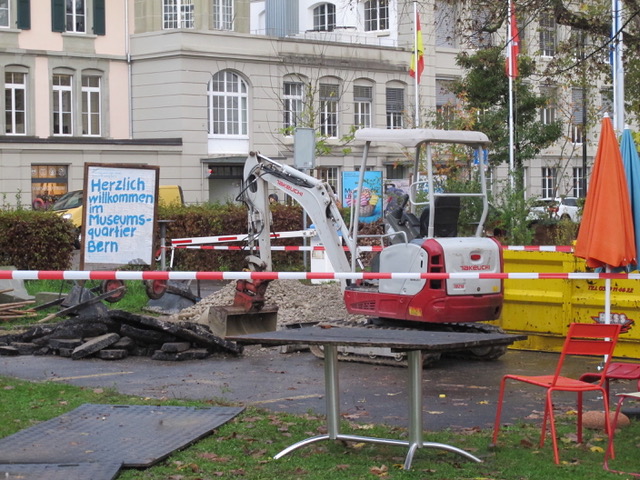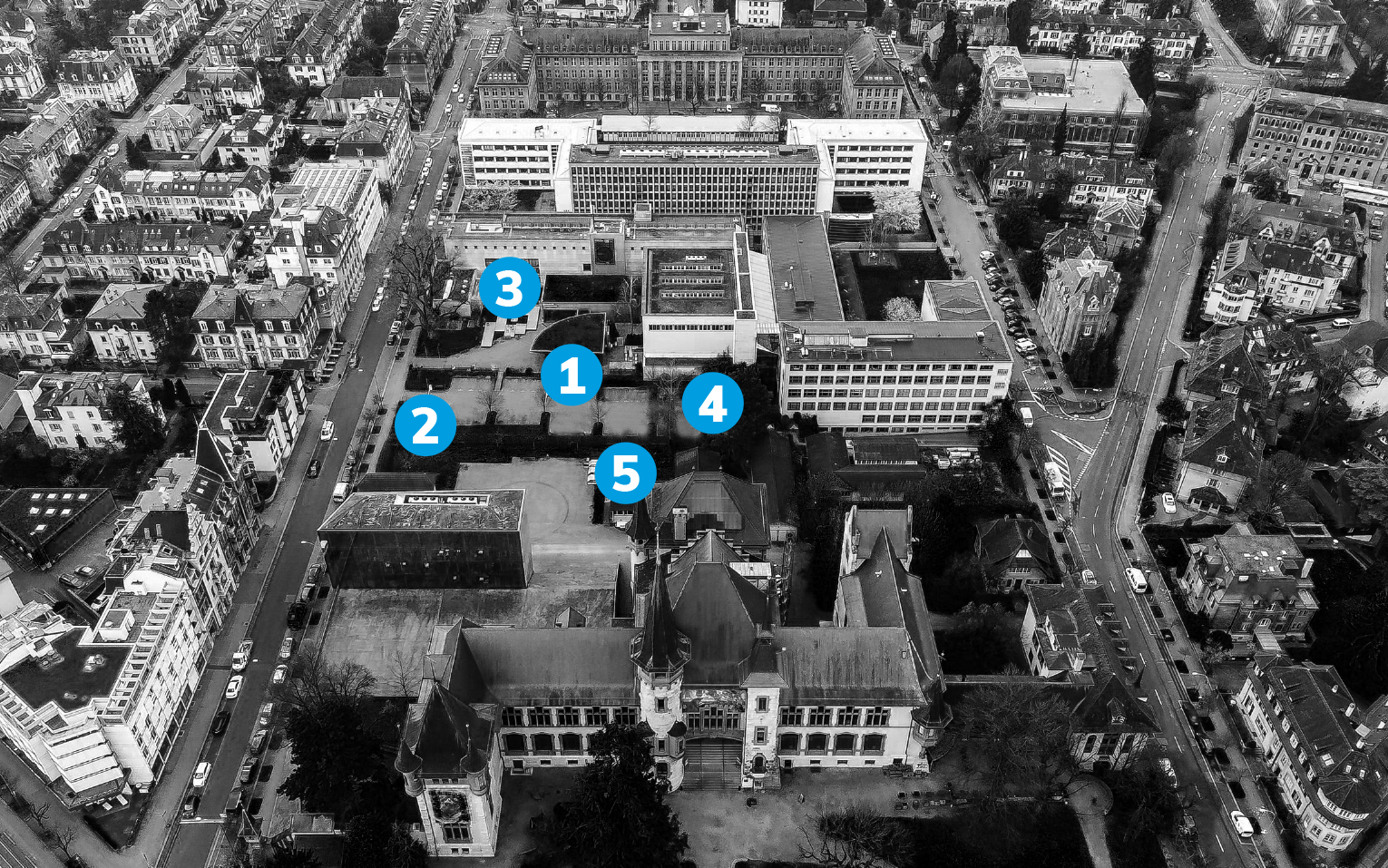More Nature!
Museumsquartier Bern consists not only of institutions and their buildings, but also as a natural space. With the project More Nature! we are enhancing the green spaces and increasing biodiversity.
The potential to enhance biodiversity on the premises of the institutions of Museumsquartier Bern is high. Under the motto More Nature! we organise various events to promote a greater diversity of native animals and plants.
The aim of the participatory project is to enable employees from the institutions and residents to get involved and to lend a hand. Experts involved in the project tell what to look out for during the activities.

More Nature! Semi-natural structural elements in the Museumsquartier Bern
Even in urban areas, it’s possible to create habitats for plants and wildlife. Every “stepping stone” helps to preserve biodiversity.
In the Museumsquartier Bern, staff, local residents and other interested parties have been working together with experts to develop ideas for promoting biodiversity in this area.
Why not visit the first measures implemented and get some inspiration for your own garden or balcony?
1 Wild hedge
2 Ruderal area
3 Stone hibernaculum
4 Woodpile
5 Semi-dry meadow

Sites of the semi-natural structural elements – there are more to come!
The wild hedge consists of a variety of native species of trees and shrubs, such as blackthorn, privet and rowan, with an infrequently mown herbaceous fringe. As well as providing food and nesting places for birds and insects, it offers shelter and serves as a connectivity element for many other small animals.
Ruderal areas are gravelly or sandy sites colonised by a community of specialist animal and plant species. Typical pioneer plants are mullein and viper’s bugloss. Grasshoppers and wild bees lay their eggs in the open ground. Unless repeatedly disturbed, these areas will gradually be covered by vegetation.
Stone hibernacula are piles of stones let into the ground, where animals such as amphibians and reptiles can spend the winter safe from frost. They should be exposed to the sun and surrounded by a herbaceous fringe. Insects, lizards and other small animals will bask on the stones and find shelter and nesting places.
Branches of varying thickness should regularly be added to a woodpile so as to create cavities of different sizes, offering shelter for toads, wrens or hedgehogs. For many other animals, a woodpile will also provide opportunities for feeding, nesting and development, as well as basking sites in sunny spots.
This species-rich meadow thrives at sunny, low-nutrient sites and is only mown once or twice a year. The wide variety of flowers provide food for numerous insects, making the meadow an ideal hunting ground for birds, bats, spiders and small mammals.